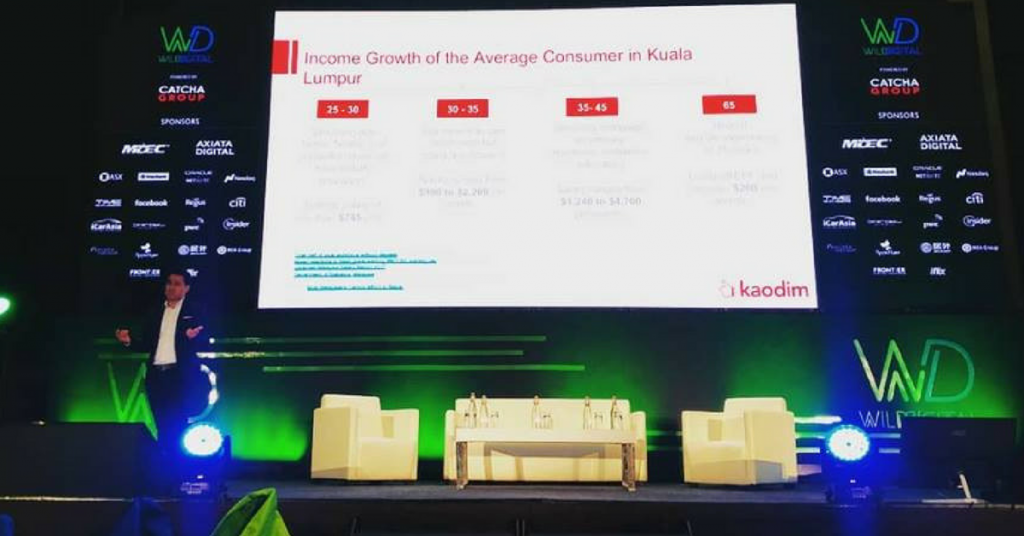We had the opportunity to attend Wild Digital over the week to listen to international speakers on a wide array of topics, from fintech, mobile ad fraud and many more.
One topic that quite a few speakers touched on: Southeast Asia is an emerging market for businesses. Kaodim‘s co-founder, Jeffri Cheong understands the potential of SEA and shared a few insightful points during his talk on the paradox of Southeast Asia.
Low Income, But Increasing Growth Rates
Although Southeast Asia currently has a low income average, they have been recording exceptional growth in the past couple of years. This growth was seen alongside increasing internet penetration rates, growing income levels and a growing population.
According to a report done on the digital landscape of Southeast Asia, the internet penetration rate in SEA as of January 2017 is only at 339.2 million which is around 53%. It is expected that the amount will increase as connectivity around the region is made more accessible.
“Southeast Asia is expected to be the 5th largest economy in the world by 2020.”
That’s good to know (and cheer on!), but what can businesses actually do with such knowledge and leverage off the growth?
Jeffri explained that the first step is: understanding your customers.
You have to create meaningful and long lasting relationships with consumers by understanding and solving their pain points.
He further added why these people are so important.
“These people are consuming products that you are building, these people are supplying the marketplace, these people are the founders that you are investing.”
“These are the employees that will help you operate your business, these people are the regulators who you have to work with to get licenses and permits,” he added.
Only Room For Growth
With many years in the marketplace, Jeffri feels that the marketplace will only grow further in the coming years as long as you continue to solve pain points of consumers.
Thus he shares with us ideas on how to accelerate growth for a marketplace.
Firstly, is to “throw money at the problem”. Example of companies that have done this are Grab and Traveloka who have spent a lot of money to educate the consumers on how to use their products and services.
Secondly, is to decide whether to have your marketplace be more “managed”, as opposed to “unmanaged”. Most marketplaces are “unmanaged” where consumers depend on peer-to-peer reviews; take for example, mudah.my and Carousell.
But more marketplaces are now evolving to become lightly managed, take for example Uber where there is the review from users on the drivers where they will then filter out the bad drivers. They get more involved in the operations and transactions.
In fully managed marketplaces such as Opendoor, they control everything from supply, operations, transactions – from start to end.
Rethinking SEA
To end his talk Jeffri shared 4 things to take away:
- Assess SEA for what it is and don’t benchmark SEA against markets around the world.
- Understand customers’ pain points and solve them. This will ensure that customers continue to use your services or products and will make the business sustainable.
- Observe political and social developments in the region. These can impact the growth rates in a positive or negative way.
- Lastly, consider optimising for growth rates rather than just revenue.
“It’s important to see Southeast Asia as not what it is today, but what it can become in the next 5 to 10 years.“
- Read up on what other entrepreneurs, investors and industry movers & shakers had to say at Wild Digital here.
Feature Image Credit: Wild Digital
